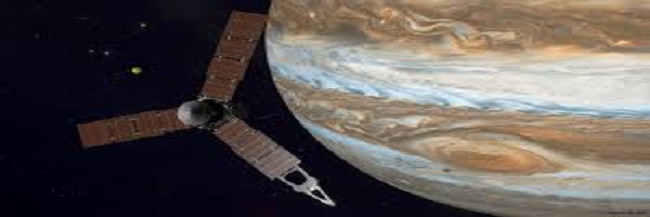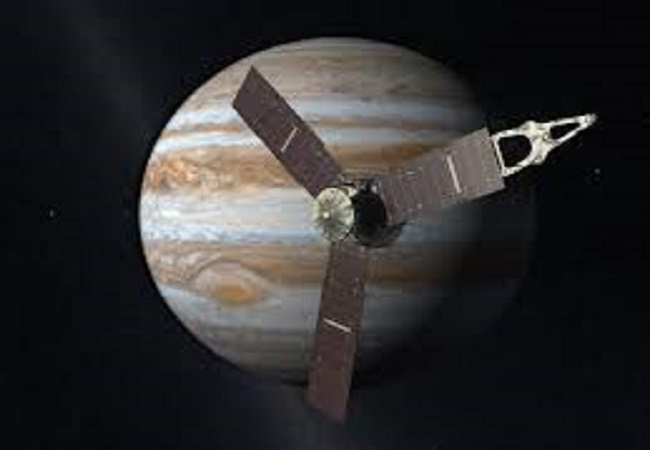Juno Spacecraft on Target to Enter Jupiter’s Radiation Zone
 Kevin Gill from Nashua, NH, United States, CC BY-SA 2.0, via Wikimedia Commons
Kevin Gill from Nashua, NH, United States, CC BY-SA 2.0, via Wikimedia Commons
On July 4th, Juno is set to fire it’s main engine for 35 minutes which will blast it directly into Jupiter’s orbit to embark on a 20 -month journey around the biggest planet in out solar system. But don’t think this unmanned trip is going to be easy. Jupiter’s atmosphere is rough, to say the least…
On this 37-orbit trek around Jupiter, Juno’s closest approach will have it flying a measly 2,900 kilometers (4,667 km) above the gas giant’s cloud top; this is the closest approach any spacecraft has taken to-date. The rugged-built machine will also be traveling at approximately 129,000 miles-per-hour (207,000 kilometers-per-hour) which is faster than another other man-made object before it.

The tough part of this mission for Juno will be Jupiter’s highly radioactive environment and magnetic field that surrounds the planet with super-charged electrons, protons and ions all traveling at the speed-of-light.
Scott Bolton, principal investigator for the Juno team at the Southwest Research Institute in San Antonio, states that Juno needs to get close enough in order to obtain the special measurements they are looking for to get a better idea of how this planet was formed and what exactly is going on inside of it.
Thanks to Jupiter’s eccentric polar orbit, Juno won’t have to spend a lot of time inside it’s severe radiation zone. But it will allow it to map the entire planet with each pass the spacecraft makes. A polar orbit will also allow Juno to measure the magnetic field of the gassy world at all latitudes. Jupiter’s magnetic field is the strongest any spacecraft has ever flown though, so much so that it can’t be duplicated here on Earth.
Jupiter’s radiation on Juno over the course of its mission would be like having 100 million dental x-rays, so it’s delicate instruments are nestled safely in the first ever man-made titanium vault. This vault will shelter the ship’s gear by 1/800th of what it is outside of Juno. However, scientists still expect a slow deterioration of damage to Juno due to the sheer amount of radioactive material present in this harsh atmosphere.
According to Heidi Becker of JPL, Juno’s Radiation Monitoring Investigation lead, she is sure over time, Jupiter’s highest-energy electrons will eventual eat away through Juno’s vault, which is predicted to create a spray of secondary photons and particles. Unfortunately, the spacecraft will not be able to withstand the constant bombardment and it will eventually break the electronic bonds in the spacecraft.
Hopefully, before the damage happens, Juno will be able to collect the needed data to give us a better idea of what is going on in the gas giant. If all goes well, within a few years we should have a vast amount of research details, that may just shed a whole new light on Jupiter.
